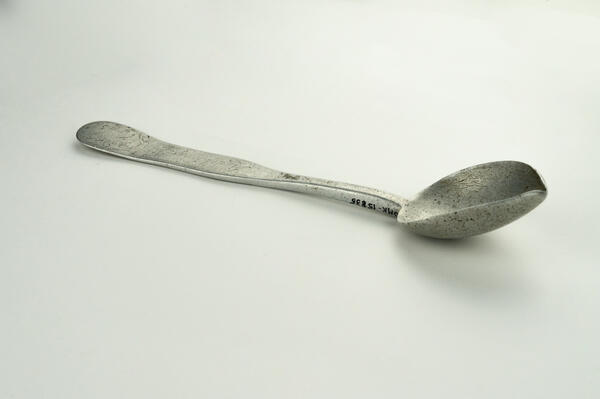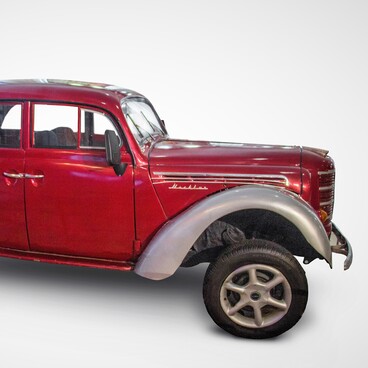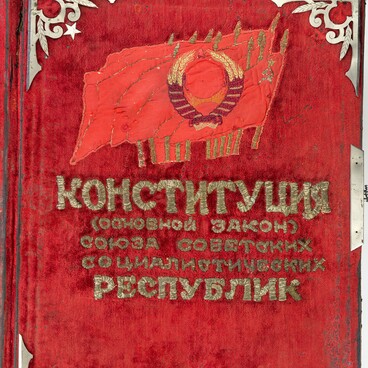The displayed aluminum table spoon was donated to the museum by the Omsk resident Galina Velichko, who had found it on the territory of her summer cottage in a gardeners' partnership ‘Zheleznodorozhnik’.
The gardeners' partnership ‘Zheleznodorozhnik’ (this name means ‘railman’ in Russian) in the village of Ostashkovo was established in the 1950-60-s. The first owners of the plots were railroad workers.
The spoon is made of aluminum, with inscriptions in Estonian on both sides. Researchers suppose that the spoon belonged to the POW camp convict during World War I. At that time, Russian soldiers, refugees, and war prisoners were brought to Omsk, which was in the rear, for treatment.
In total, during World War I, around 2,300,000 soldiers and officers of Austria-Hungarian, German, and Turkish armies were taken prisoner in Russia. As of January 1, 1917, there were about 200 thousand war prisoners in the Omsk military district, among them were Hungarians, Austrians, Germans, Poles, Czechs, Italians, Slovaks, and soldiers from other countries. A camp for them was built in Omsk, where the first Western Siberian Exhibition was held in 1911.
At first, the Russian government planned to house the POWs in the districts far from large cities and the railroad, on the territory of the Omsk and Irkutsk military districts. However, as there were too many prisoners and too few special barracks, they had to settle in Siberian cities.
The government policy toward prisoners of war complied with the basic principles of the 1907 Hague Conference. In October 1914, Nicholas II ratified ‘The Statute Concerning Prisoners of War, ’ which demanded they were treated humanely, ‘as legitimate defenders of their country.’ Their labor was used in agriculture, construction works, railroad objects, and factories. For instance, the prisoners erected the Omsk Railway Administration building, where now the Omsk State Transport University is located.



